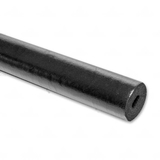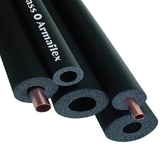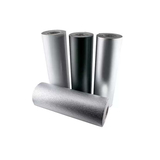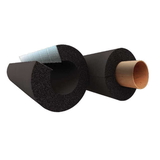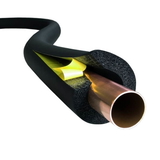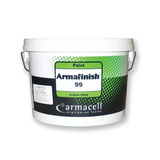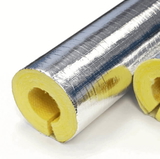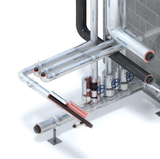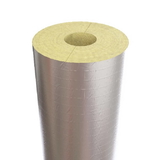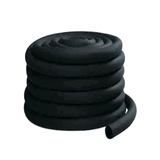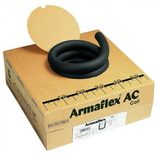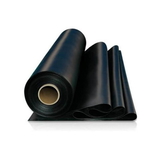- Blogs
- How to Choose the Best Outdoor Pipe Insulation for Your Home?
How to Choose the Best Outdoor Pipe Insulation for Your Home?

If you have pipes that run outside your home, you may be wondering how to protect them from the elements. Outdoor pipe insulation is a simple and effective way to prevent heat loss, freezing, condensation, corrosion, and noise in your pipes. But how do you choose the best outdoor pipe insulation for your needs?
In this article, we will guide you through the different types of outdoor pipe insulation, their benefits, and drawbacks, and how to install them properly. By the end of this article, you will have a better understanding of how to keep your pipes safe and efficient with outdoor pipe insulation.
What is Outdoor Pipe Insulation?
 Outdoor pipe insulation is a material that covers the exterior of pipes that are exposed to the outside environment. The main purpose of outdoor pipe insulation is to reduce the heat transfer between the pipe and the surrounding air, which can result in energy loss, freezing, condensation, corrosion, and noise. Outdoor pipe insulation can also protect the pipes from physical damage, such as impact, abrasion, and UV rays.
Outdoor pipe insulation is a material that covers the exterior of pipes that are exposed to the outside environment. The main purpose of outdoor pipe insulation is to reduce the heat transfer between the pipe and the surrounding air, which can result in energy loss, freezing, condensation, corrosion, and noise. Outdoor pipe insulation can also protect the pipes from physical damage, such as impact, abrasion, and UV rays.
There are many types of outdoor pipe insulation available, each with different characteristics and applications. Some of the most common types are:
- Elastomeric nitrile rubber pipe insulation: This is a flexible and durable material that can withstand high temperatures and resist water, oil, and ozone. It is easy to install and has good thermal and acoustic properties. It is suitable for hot and cold water pipes, refrigeration and air conditioning pipes, and solar heating systems. One of the products that we recommend is K-Flex Self Seal Elastomeric Nitrile Rubber Pipe Insulation, which has a self-adhesive closure system that makes installation quick and easy.
- Mineral wool pipe insulation: This is a rigid and fire-resistant material that can withstand high temperatures and resist moisture, mould, and vermin. It is ideal for steam and process pipes, flues and chimneys, and fire protection systems. One of the products that we recommend is Isover Clim Pipe Aluminium Faced Class O Mineral Wool Pipe Insulation, which has an aluminium foil facing that provides extra protection and reflects radiant heat. Isover pipe insulation is however, not esistat to UV and environmental abrasions and therefore needs to be covers with appropriate pipe jacketing
- Phenolic pipe insulation: This is a lightweight and rigid material that has excellent thermal and fire performance. It is suitable for heating and ventilation pipes, chilled water pipes, and district heating and cooling systems. One of the products that we recommend is Kingspan Kooltherm Aluminium Faced Class O Phenolic Pipe Insulation, which has an aluminium foil facing that enhances the thermal efficiency and durability of the insulation. Pheonolic pipe insualtion is however, not esistat to UV and environmental abrasions and therefore needs to be covers with appropriate pipe jacketing
- Stone wool pipe insulation: This is a robust and resilient material that can withstand high temperatures and resist moisture, fire, and sound. It is ideal for industrial and marine pipes, power generation and petrochemical plants, and fire sprinkler systems. One of the products that we recommend is Rockwool Aluminium Faced Stone Wool Pipe Insulation, which has an aluminium foil facing that provides extra protection and reflects radiant heat. Rockwool pipe insulation is however, not esistat to UV and environmental abrasions and therefore needs to be covers with appropriate pipe jacketing
- Nitrile rubber pipe insulation: This is a flexible and soft material that can conform to any shape and size of pipe. It is easy to install and has good thermal and acoustic properties. It is suitable for hot and cold water pipes, refrigeration and air conditioning pipes, and solar heating systems. One of the products that we recommend is Armaflex Pipe Insulation Nitrile Rubber Black Pipe Lagging, which has a closed-cell structure that prevents water vapour transmission and condensation. To make nitrile rubber pipe insulation more durable and resistant to UV, an Anti-UV paint or any weather presistant pipe jacketing can be used
- Armacell Tuffcoat: Armacell or Stornch Tuffcoat have a thin layer of PVC on thier outer surface. The PVC coating makes these lagging sections better at withstanding UV, damage from birds etc.
How to Choose the Best Outdoor Pipe Insulation for Your Home
When choosing the best outdoor pipe insulation for your home, you need to consider several factors, such as:
- The type and size of the pipe: Different types of pipes have different thermal and mechanical properties and require different types of insulation. For example, copper pipes have high thermal conductivity and are prone to freezing, so they need a thicker and more insulating material than plastic pipes. Similarly, larger pipes have more surface area and lose more heat than smaller pipes, so they need a thicker and more insulating material than smaller pipes. You can measure the diameter and length of your pipes to determine the size and quantity of insulation you need.
- The temperature and pressure of the pipe: Different temperatures and pressures affect the performance and durability of the insulation. For example, high temperatures can cause the insulation to degrade, melt, or catch fire, so you need a material that can withstand high temperatures and resist fire. Similarly, high pressures can cause the insulation to compress, crack, or burst, so you need a material that can withstand high pressures and resist mechanical damage. You can check the specifications of your pipes and the insulation to ensure they are compatible and suitable for your needs.
- The climate and environment of the pipe: Different climates and environments expose the pipes and the insulation to different weather conditions and hazards, such as rain, snow, wind, UV rays, insects, rodents, and chemicals. For example, wet and humid conditions can cause the insulation to absorb water, swell, or rot, so you need a material that can resist water, mould, and vermin. Similarly, sunny, and windy conditions can cause the insulation to fade, crack, or peel, so you need a material that can resist UV rays, abrasion, and impact. You can choose a material that has a protective coating or facing that provides extra protection and durability for the insulation.
- The budget and preference of the homeowner: Different types of insulation have different costs and benefits, and you need to balance them according to your budget and preference. For example, some materials are more expensive but have better thermal and fire performance, while some materials are cheaper but have lower thermal and fire performance. Similarly, some materials are easier to install but have lower durability, while some materials are harder to install but have higher durability. You can compare the prices and features of different products and choose the one that meets your needs and expectations.
How to Install Outdoor Pipe Insulation Properly
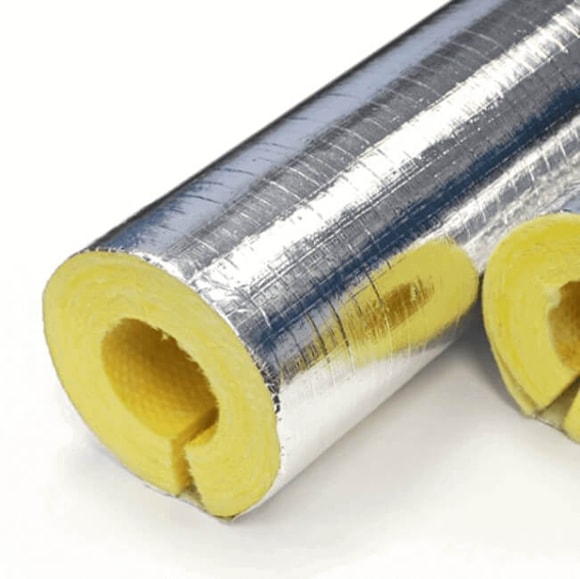 Once you have chosen the best outdoor pipe insulation for your home, you need to install it properly to ensure its effectiveness and longevity. Here are some tips and steps to follow:
Once you have chosen the best outdoor pipe insulation for your home, you need to install it properly to ensure its effectiveness and longevity. Here are some tips and steps to follow:
- Prepare the pipes: Before installing the insulation, you need to clean and dry the pipes thoroughly. Remove any dirt, dust, grease, oil, or rust that may affect the adhesion and performance of the insulation. You can use a wire brush, sandpaper, or degreaser to clean the pipes. You also need to repair any leaks, cracks, or damages that may cause water or air infiltration and reduce the efficiency of the insulation. You can use a plumber’s tape, epoxy, or sealant to fix the pipes.
- Cut the insulation: After preparing the pipes, you need to cut the insulation to fit the size and shape of the pipes. You can use a tape measure, a marker, and a utility knife to cut the insulation. You need to cut the insulation slightly longer and wider than the pipe to allow for expansion and contraction. You also need to cut the insulation to accommodate any bends, elbows, tees, valves, or fittings on the pipe. You can use a miter box, a compass, or a template to cut the insulation accurately.
- Apply the insulation: After cutting the insulation, you need to apply it to the pipes. You can use different methods depending on the type of insulation you have. For example, if you have self-adhesive insulation, you can simply peel off the backing and press the insulation firmly onto the pipe. If you have non-adhesive insulation, you can use glue, tape, or a clamp to secure the insulation onto the pipe. You need to make sure that the insulation is snug and tight around the pipe, and that there are no gaps or overlaps between the pieces of insulation.
- Protect the insulation: After applying the insulation, you need to protect it from the elements and hazards. You can use a jacket, a wrap, or a paint to cover the insulation and provide extra protection and durability. You need to choose a material that is compatible and suitable for the type of insulation you have. For example, if you have aluminium-faced insulation, you can use aluminium tape or foil wrap to seal the joints and edges of the insulation. If you have rubber insulation, you can use a rubber paint or a latex coating to protect the surface of the insulation.
Frequently Asked Questions
Q: What should I consider when insulating pipes are exposed to external elements?
A: When insulating pipes exposed to external elements, it's crucial to choose insulation materials that are resistant to weather conditions such as UV exposure, moisture, and extreme temperatures. Additionally, ensuring proper sealing and protection of the insulation against ingress of water or pests is essential for long-term effectiveness.
Q: Can I install outdoor pipe insulation myself?
A: Yes, you can install outdoor pipe insulation yourself with the right tools and materials. Follow manufacturer guidelines and best practices for pipe insulation installation to ensure proper coverage and sealing. However, for complex or extensive installations, it may be advisable to consult a professional plumber or insulation specialist.
Q: What is the recommended maintenance for outdoor pipe insulation?
A: Regular inspection to check for any signs of wear, damage, or degradation of the insulation material is recommended. Additionally, ensure that the insulation remains intact and properly sealed to maintain its effectiveness. Address any issues promptly to prevent potential heat loss, condensation, or damage to the pipes.
Q: How does outdoor pipe insulation contribute to energy efficiency?
A: Outdoor pipe insulation contributes to energy efficiency by reducing heat loss, thus requiring less energy to maintain the desired temperature within the plumbing system. This results in lower energy costs and improved overall energy efficiency for the heating or hot water system.
Q: What are the key considerations for selecting outdoor pipe insulation for HVAC systems?
A: When selecting outdoor pipe insulation for HVAC systems, consider the insulation material's thermal properties, its resistance to environmental factors, and its ability to prevent heat loss or condensation. The insulation should be suitable for the specific requirements of the HVAC system and the outdoor conditions it will be exposed to.
Conclusion
Outdoor pipe insulation is a smart and easy way to improve the performance and safety of your pipes. By choosing the best outdoor pipe insulation for your home, you can save energy, prevent freezing, reduce condensation, prevent corrosion, and reduce noise in your pipes.
You can also protect your pipes from physical damage, such as impact, abrasion, and UV rays. You can find a wide range of outdoor pipe insulation products at Buy Insulation Online, the UK’s leading online supplier of insulation products.
Whether you need elastomeric nitrile rubber pipe insulation, mineral wool pipe insulation, phenolic pipe insulation, stone wool pipe insulation, or nitrile rubber pipe insulation, we have it all.
You can also find all the accessories and tools you need to install and protect your outdoor pipe insulation properly. Visit our website today and order your outdoor pipe insulation with free delivery and the best price guarantee.

Samuel Hitch
Managing Director
Buy Insulation Online.
Leave A Reply
Your feedback is greatly appreciated, please comment on our content below. Your email address will not be published. Required fields are marked *










